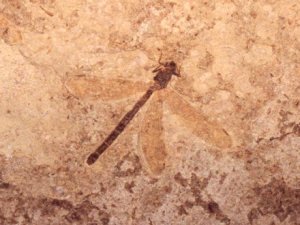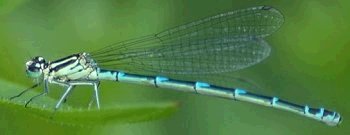Creation: Question Evolution Campaign — 10 of 15

A Sunday guest post by my brilliant husband, Gregg.
Every Sunday, my clever husband offers me a “day of rest” by taking over the homemaker duties here. His primary topic, the Biblical Truth of Creation vs. Darwinism, is a subject that has broad reaching scientific, social, and metaphysical implications and is gaining more and more attention in our modern culture. For believers and non-believers alike, the primary purpose is to present scientific, historical, logical, and/or sociological data in an empirical and defensible fashion, as much as possible written in layman’s terms, and in a format suitable for supplementing any homeschool curriculum whether you choose to believe the Biblical account — or secular guesses — about the origins of human life on earth.
Lazarus Taxa
Question number 10 in the creation.com Question Evolution campaign is, “How do ‘living fossils’ remain unchanged over supposed hundreds of millions of years?”
The late Professor Stephen J. Gould wrote, “the maintenance of stability within species must be considered as a major evolutionary problem.” No kidding, doc. How do ‘living fossils’ remain unchanged over supposed hundreds of millions of years, given that the Darwinian model of evolution has changed worms into humans in the same time frame?
I wrote a very long post about the Lazarus Taxa in a post entitled “Creation: Lazarus Taxa Come Forth!” I talked about bugs and fish and flowers and spiders and plants and even people. The thing is, paleontologists all seem to want to “discover” a new species and have it named after themselves. A recent critical reorganization of all known dinosaurs, for example, showed that a huge number of simply immature (as in juvenile) specimens were granted a species name as if they were an entirely different species. So, a baby Something-a-saurus is called Something-else-a-saurus quite often.
In exactly the same way, when a fossilized cockroach is found in the dirt somewhere — in every meaningful morphological way identical to a modern day cockroach — it is christened a Cockroach-Something-Saurus. Usually, the “something” is the name of the paleontologist who “discovered” this exciting new species.

See, the problem is, they are identical. Maybe the ones we find in the fossil record are significantly older (biological age not assumed evolutionary age it died) or significantly larger, but both of those facts actually refute Darwin. It should no longer be a dead ringer for the ancient fossil, assuming evolution is true. It should be extinct. Or, it should be replaced by a differently evolved Ray. Or replaced even by some non-Ray. Something should be different after so many millions of years.

The tiny, metallic green dragonfly known as the Ancient Greenling Damselfly was found at Long Swamp, in the Discovery Bay Coastal Park near Portland. The damselfly, part of the dragonfly group Odonata, is the only living representative of the family Hemiphlebiidae. Its so-called ancient predecessors are found solely in a timeframe that Darwinists claim is 250-300 million-year-old fossil records anywhere from Brazil to Russia.

Okay. So, following evolutionary concepts, 300 million years ought to be more than enough time for mutations to occur in the damselfly and for natural selection to weed out the unfit and generate a new living form from the old. In fact, given the assumed evolutionary process of mutations and natural selection relentlessly occurring over time, even at miraculously slow rates, this vast age ought to guarantee at least some alteration in the insect. But not only is the damselfly still recognizable as a damselfly, but even more specifically as the Ancient Greenling Damselfly.
But it should no longer be a dead ringer for the ancient fossil, assuming evolution is true. It should be extinct. Or, it should be replaced by a differently evolved Damselfly. Or replaced even by some non-Damselfly. Something should be different after so many millions of years.
For more information about question number 10 in this searies, visit creation.com/living_fossils.
The Truth
Darwinist apologists have no valid, cogent, sound explanation for the gaps in the fossil record because they are locked into a paradigm of uniformitarianism.
“The fossil record is often so sparse that … there are plenty of cases where groups survived for tens of millions of years without leaving a single fossil.” Peter J. Bowler, Review of In Search of Deep Time, by Henry Gee (Free Press, 1999). In American Scientist (vol. 88, March/April 2000), p. 169.
A person with even a fragment of objectivity can see the foolishness in the constant Darwinian apologia. The truth is that the fossil record is not a record of long evolutionary ages, with distinctive life forms in each distinctive age, as Darwinists allege and purport, but rather of just one age, that of the great flood and the subsequent local catastrophes that followed the global flood. Little wonder, then, that practically all modern living organisms are represented in the rocks of the so-called geologic column.
In their nearly infinite variety, vast complexity, perfectly engineered design, and uncompromising beauty, all living things bear witness to the wisdom and power of our Creator, while the great panorama of suffering and death — and often even extinction — displayed in their fossilized preservation is a perpetual reminder, not of Darwinism and evolutionary theory, but of the terrible consequences of human sin on this earth.
I commit to you that I will publish every single comment that meets this blog’s commenting criteria. You may want to review that criteria before adding your opinion here.
God Bless you and yours.
Gregg
Resources:
Additional Posts dealing with Creation and Darwinism


…”See, the problem is, they are identical.”
.
I don’t know the conventions of fossil naming, but my guess is that they are given different names because while the fossil may look much the same, it is impossible to tell from a fossil whether they are actually the same. So they give a different name in order to avoid giving an incorrect name.
,
,
,
….”But it should no longer be a dead ringer for the ancient fossil, assuming evolution is true. It should be extinct. Or, it should be replaced by a differently evolved Damselfly. Or replaced even by some non-Damselfly. Something should be different after so many millions of years.”
.
You’re making a false assumption about evolution.
I no longer believe it is possible to make any false assumptions about evolution. The Darwinian model of evolution is so plastic that it is used as an explanatory rescue device for utterly contradictory processes. Ultimately, any concept that means absolutely everything means (honestly) nothing.
The evolution theory is an irrational falsehood, zealously embraced by atheists, that is a phony conclusion of the 600+ million year fossil record. There is no “valid supporting data” for evolution. In a court of law, or in a public forum, the same evidence that evolutionists would use to try to “prove” the validity of that theory, I would utilize to reveal the truth of Genesis. In order to believe in evolution, you have to purposely ignore certain facts of reality. For example, when you see illustrations of primates being pictured as evolving into humans, it can be shown in a court of law that such a premise is impossible, because certain human and primate traits are different, and could not have ever been shared. The only “common ancestor” that humans and primates share is God Himself.
Current Creationism has refused to teach the truth of the Genesis text, and either teaches foolishness (young Earth), or false doctrines (non-literal reading of the text). Creationists thoughtlessly try to prove “Creationism”, rather than seeking and teaching the truth of Genesis. How can an untruth, ever prove another lie, to be in error? You can’t do it. That is why Creationism fails. It essentially is also a lie, and should be discarded, even by Bible believers.
The correct opposing view to evolution is the “Observations of Moses”, which is the ONLY presentation that reveals the truth of Genesis chapter one. It is the true rendition of the Hebrew text. Everything else, unfortunately, are false and foolish interpretations of scripture.
Those that imply that God used evolution are infidels at worse, or clowns at best, that refuse to learn the truth of Genesis. The truth has been available for more than 18 years. Such a discussion is currently silly, and shows stubbornness against learning the truth of God’s Word.
There are no “creation stories” in Genesis. In fact, about all of theology and creationism have no idea what Moses was writing about. You can’t simply take an advanced book of math or science, and try to read from it on your own without personal instruction.
For example, Genesis declares that mankind has been on this Earth, in his present likeness, for more than 60 million years. The “male and female” in Genesis chapter one was not “Adam & Eve”. Has modern science discovered that yet?
Herman Cummings
ephraim7@aol.com